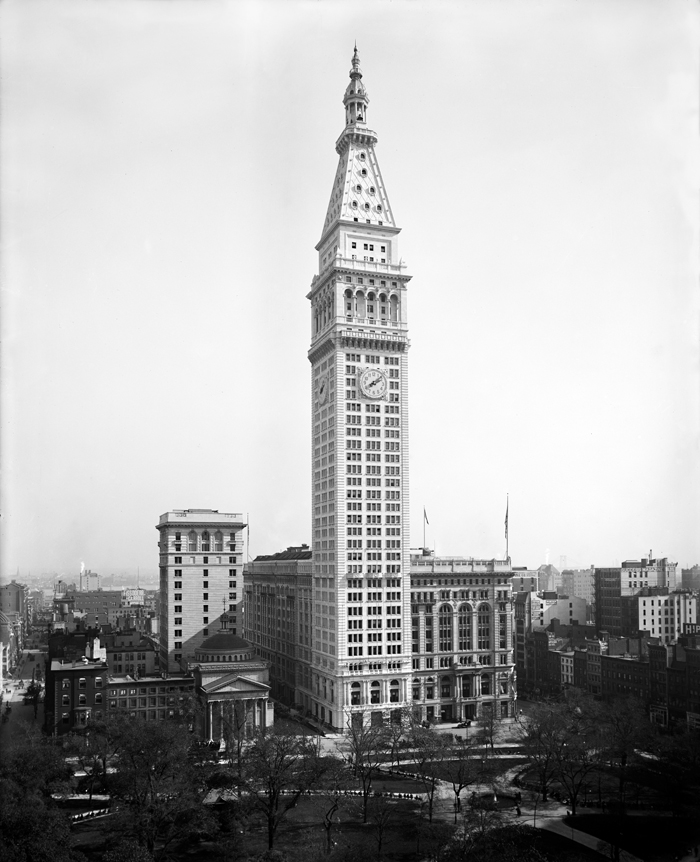The Skyscraper Museum is devoted to the study of high-rise building, past, present, and future. The Museum explores tall buildings as objects of design, products of technology, sites of construction, investments in real estate, and places of work and residence. This site will look better in a browser that supports web standards, but it is accessible to any browser or Internet device.
METROPOLITAN LIFE INSURANCE COMPANY BUILDING

Metropolitan Life Insurance Bulding, Madison Square, New York, NY; Detroit Publishing Co., 1915; Library of Congress
Constructed in 1908, the tower of the Metropolitan Life Insurance Company was an addition to the existing 11-story home office structure intended to proclaim the stability of the company that had become the world's largest insurer. This Tower, designed by Napoleon LeBrun, held the title as the world's tallest structure, at 700 feet, until 1913 when the Woolworth building left it in its shadow.
When originally constructed, the Tower had classical balconies, balustrades, turrets, and other architectural details, but they were lost after an aggressive remodeling campaign in 1960-61. Along with the classical details that were stripped off during this renovation, the white Tuckahoe marble facade was replaced with sheer limestone panels so the Tower would match the modernized base.
The Metropolitan Life Tower exemplifies one of three major themes used in office skyscrapers that emerged in 1890s1. Unlike the Gothic style of the Woolworth, the Metropolitan Life Tower utilizes a Classical style chosen to evoke the famed bell-tower of San Marco in Venice. But, "by 1912 most of the critics, notably Schuyler, favored a vertical design mode as the best means of expressing the steel frame of an office building, and the Gothic style was perceived as offering the ideal solution. The Classical was derived from the post-and-lintel system of construction and was therefore considered inappropriate for a steel-framed office building."2 Nevertheless, the Metropolitan Life Insurance Company Tower "remains a riveting and distinctive presence and still speaks of the dramatic culmination of the first great skyscraper era."3
1. Sara Bradford Landau, Carl W. Condit, The Rise of The New York Skyscraper, Yale University Press; 1996
